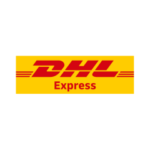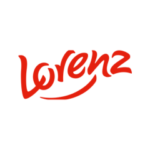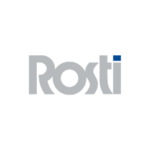Today, I have decided to address the information flow model in the production management process in manufacturing companies. Since we are talking about a model, can it be standardised or normalised? A standard is a document approved for general use. A standard is a description of a certain level, a typicality of actions. I am, therefore, inclined to speak of a standard for information flow, especially as many of them have appeared in recent years. In line with Masaaki Imai’s claim that standards are not immutable, they have “adapted” to the current situation. Thus, it should be understood that they function in order to be changed. Here is how it has looked over the last 30 years.
MRP II system: functions
At the beginning of the article, let us answer the question: what do you associate MRP II with? The first association, an intuitive one, with the ERP system of course. I asked this question to many respondents and most of them mentioned just such a connotation. Some people even used these terms as synonyms. Was it right?
Let us go back to 1989 when the APICS (The Association for Operations Management) published the document MRP II Standard System. They worked on its final form for quite a long time, as the first attempts to create a standard started as early as in the 1960s. I must admit that the document still amazes me today with the foresight of its authors, the comprehensiveness of its approach, the process approach. Let us see what functions of the MRP II class system the APICS enumerated (of course, as a reminder; after all, you know this list):
- SOP (Sales and Operation Planning)
- DEM (Demand Management)
- MPS (Master Production Scheduling)
- MRP (Material Requirement Planning)
- BOM (Bill of Material Subsystem)
- INV (Inventory Transaction System)
- SRS (Scheduled Receipts Subsystem)
- SFC (Shop Floor Control)
- CRP (Capacity Requirement Planning)
- I/OC (Input/Output Control)
- PUR (Purchasing)
- DRP (Distributed Resource Planning)
- TPC (Tooling Planning and Control)
- FPI (Financial Planning Interface)
- SIM (Simulations)
- PM T (Performance Measurement)
It looks beautiful. We have a full information flow feedback loop in the production control process (at that time, not so much importance was attached to determining the demand for human resources and assessing the feasibility of the plan from this point of view). We have the determination of demand, the plan for its execution, the monitoring of execution and measurement of the result as well as the modification of the plan. The full circle PDCA (Plan-Do-Check-Act). Not surprisingly, the 1990s saw a crop of ERP systems whose developers adopted the above standard. But did they really adopt it? That would still be ok, but they annexed it, considering themselves the only continuators of possible interpretations. In a way, they used the opportunity, which was a gap in the offer of an IT system, integrating the areas of finance, sales, logistics, fixed assets, other assets and production control.
ERP system: is there really no other way?
However, this development leads to a certain conclusion. MRP II is not an IT system; it is not software. It is an organisational system which is a set of procedures with a three-level structure. It is like in Deming Wheel: plan-do-study-act. Everything is connected like in a regulating system, by means of feedback.
Well, marketing is the key to business success. And now, after better or worse ERP system implementation, say yourselves: do you have solved problems, for example, with master production scheduling? I have seen many MPS (item 3) and, virtually, every one of them looked like a sales plan, not a production plan, i.e. a list of finished goods flowing into the warehouse at specific time intervals. And wasn’t MRP material requirements planning (item 4) limited to volume requirements for raw materials over a long balancing period? What about semi-finished products and the volume of work in progress? Does CRP (item 9) assume that production resources are not a production constraint? The questions could multiply; however, it is puzzling why we pose them? Have we become to believe that it is impossible to do otherwise? Paraphrasing Baudelaire’s saying that The devil’s finest trick is to persuade you that he does not exist, we can say that the greatest achievement of ERP producers is to make users believe that it is impossible to do otherwise, that it is the right thing to do. Despite the enormous achievements of information technology, the construction of databases, we have remained at the stage of the IT system and not that of litigation.
Production management after 1989: Excel reigns supreme
The year 1989 and the next few years passed and the missing process data were processed in Excel spreadsheets. In 1993, when the Office programs were given an Excel look and feel and the spreadsheet could create macros, no one questioned its reign anymore. It became the most popular “planning and balancing system”.
On the other hand, in order to fill the gaps (of course, this was not the only issue) in SFC (item 9), I/OC (item 10) or PM T (item 16), the MESA (Manufacturing Enterprise Solutions Association) published in 1997 the 11 basic functions of a MES (Manufacturing Execution System). Here they are. Let us see what MRP II class system functions the APICS distinguished (you know them too):
- (Process Management)
- (Performance Analysis)
- (Production Tracking and Genealogy, Traceability)
- (Quality Management)
- (Data Collection and Acquisition)
- (Document Control)
- (Resource Allocation and Status)
- (Labour Management)
- (Maintenance Management)
- (Operations/Detailed Scheduling)
- (Dispatching Production Units)
Are these functions noy part of the MRP II standard? Are they not a complement, a concretisation of those guidelines? I mentioned that I missed human resources management in the earlier standard and here it is! Only does writing it mean putting it into practice?
Production management vs. MES system
Another observation is that we have too many expressions containing the word management. There are many definitions of management, but focusing on the classic Fayol’s version (management is planning, organising, deciding, motivating and controlling), it is hard not to get the impression that MES implementations are far from such a definition. In most cases, MES reflects the course of events in production. They map reality and record the states of three basic objects, the machine, the man and the production order, often in the context of collecting process parameters. They, then, deposit the data in a database, thus enabling multisectional analyses and providing feedback to planning systems.
And there it is. We are reaching the point where we are starting to see not only the complementation, but also the duplication of certain functionalities: above all, in the areas of production planning, production scheduling and order or resource control. Therefore, it became natural that suppliers of ERP and MES systems started a kind of fight to convince the market that they deliver solutions enabling the management process, especially its first phase, i.e. planning and organising.
We were slowly beginning to lose track of who/what/why in the process is. It was time to get more specific, to develop a framework of influences and information flows between systems. In 2000, the ISA (International Society of Automation) developed ANSI/ISA 95 which described a uniform data exchange interface between “production” systems. The information flow was delineated between five layers of the enterprise:
- Level 0: the actual process physically occurring in production
- Level 1: measuring and control equipment sensors and resource control components used in process changes
- Level 2: monitoring and control of the physical process by management or by automated systems
- Level 3: activities aimed at the implementation of production according to a certain schedule using the acquisition of data from lower levels and changes in demand from a higher level; it is also a multidimensional analysis of the use of company resources as well as studies of deviations from the schedule or quality pattern
- Level 4: it reflects the company’s business processes, determines demand and how to meet it, manages external and internal logistics, accounts for costs and manages human resources; forecasts and long-term plans in many dimensions are also mapped at this level.
Usually, these levels have the graphic representation that reflects the hierarchy and communication of the different systems of the enterprise:
Information flow in production IT systems according to ISA 95
Communication standards have caught on. When it comes to the responsibility of systems in the production management process, we are all used to such a scheme and we overlook the fact that we are once again witnessing a certain appropriation. Appropriation of roles and positions. Well, Level 3 is associated with MES, and yet the document authors refer to Manufacturing Operations Management (MOM), not MES. Again, the word management appears as well. And again, let us return to its conventional understanding and determination of the first actions in the process, i.e. production planning and scheduling. And although it can be assumed that long-term planning is developed in ERP, I personally do not find any more appropriate place, as well as a model for making detailed operational plans and production schedules. Why it is not ERP or MES, is a subject for separate considerations. Considerations that are justified, taking into account the attempts mentioned above to convince entrepreneurs that ERP or MES manufacturers are able to deliver something they do not have. At the appropriate level of detail of course.
This level of detail began to be sought in the 1990s. Are you curious to know what happened then? You can read about it in Part 2 of the Story of One Standard.
Dariusz Kacperczyk
consultant to the Management Board eq system
Have you got any comments or questions? Contact the author of the article via LinkedIn



































